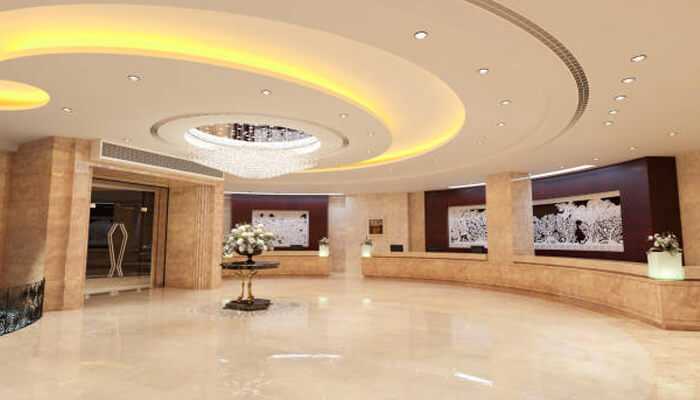At first glance, a floor just looks like a floor. Flat, solid, maybe shiny. It’s something people walk on every day without thinking twice. But in a lot of buildings—especially the big ones used for work, storage, or public services — floors can be hiding more than meets the eye. Beneath those smooth surfaces, there might be hidden doors, strong frames, and access points that keep the whole place running safely and smoothly.
These aren’t just decorations or design tricks. They’re part of how modern buildings stay useful, safe, and easy to fix when something goes wrong.
When a Floor Isn’t Just a Floor
In big buildings, things need to move—heavy wires, plumbing, equipment, and sometimes even people. But where do all those systems go without messing up the design or getting in the way? That’s where hidden doors in the floor come in.
These doors, called recessed floor doors, are built to blend into the flooring around them. Some can be filled with the same material as the floor—tile, concrete, or even wood—so they’re almost invisible when closed. But lift the lid, and suddenly there’s a whole access point ready to use.
In places like warehouses, event centers, stadiums, and busy office buildings, these hidden floor hatches are super useful. They make it easy for workers to reach cables, pipes, or storage spaces below, without making a big mess or tearing up the floor every time.
If you’re curious where to find top-quality recessed floor doors for sale, there are trusted options out there that offer strong, secure covers without ruining the look of the space. These kinds of access systems are designed to hold up under pressure—literally—and still look good.
Why Architects Use Floor Hatches
Architects and building designers have to think about more than just how a space looks. They also have to figure out how everything works behind the scenes. Imagine trying to repair a water pipe under a floor with no access door. It would mean breaking through tiles or cutting into concrete—expensive and messy.
With a recessed hatch already built in, it’s simple. Open the hatch, do the work, close it up, and the floor still looks great.
These hatches also help with:
- Safety: If there’s an emergency, workers can get into sealed areas fast.
- Efficiency: Maintenance crews save time getting to important systems.
- Durability: Most recessed hatches are strong enough to handle heavy foot traffic—or even carts and equipment—without breaking.
Some of them even come with safety features like locking handles, fire resistance, or gas struts that help lift the lid slowly so it doesn’t slam shut.
What They’re Made To Handle
You might be wondering: if someone rolls a cart over one of these hatches, won’t it break? Not at all. Good floor doors are made from materials like steel or aluminum. They’re built to hold serious weight, depending on the type of building they’re going into.
In fact, there are different ratings for how much load they can carry. Some are made for light foot traffic, while others are strong enough to support forklifts or heavy machinery rolling over them all day. That’s why businesses in construction, transport, and utilities rely on them so much. They’re strong, hidden, and dependable.
Where You’ll Find Them (Even If You Don’t Notice)
Most people don’t think about floor hatches because they don’t really notice them. That’s the point—they’re supposed to blend in.
You’ll often find them in places like:
- Airports (underneath floors where power and communication lines run)
- Shopping malls (giving access to drainage or lighting controls)
- Museums or galleries (where everything has to look clean but still be easy to manage)
- Sports arenas (hidden under turf or padded floors for quick access)
- Server rooms and data centers (where cables need to be changed or added without a mess)
They’re even used in hospitals and schools. Basically, anywhere there’s a big building with complicated systems underfoot, floor access hatches are probably helping out behind the scenes.

Keeping Things Out (and In)
Some floor doors are designed to keep things out—like water, dirt, or even fire. Others are used to help keep things in, especially in places that store sensitive equipment or chemicals.
Water-tight floor hatches are great in places where flooding could be a problem. Smoke-sealed or fire-rated ones can help keep dangerous situations from spreading. It’s one more way they help keep buildings safer without being obvious.
That’s also why choosing the right kind of hatch matters. The design, material, and seal type all make a difference depending on what the building needs.
A Quiet Part That Plays a Big Role
What makes recessed floor doors so cool isn’t just how they work—it’s how they don’t get in the way. They do their job quietly, hiding in plain sight, but they’re a huge part of how buildings stay organized and safe.
And since they can be customized to match the floor style or even come in different shapes and sizes, architects can plan around them without ruining a design. It’s the perfect mix of form and function.
What to Take Away
There’s a lot more going on under the floor than most people realize. Those clean, flat tiles might be hiding access panels that keep the building running smoothly. From helping maintenance crews do their jobs faster to protecting key systems during emergencies, recessed floor hatches play a big role without standing out.
They’re not just about access—they’re about safety, planning, and smart building design. Next time you’re in a big building, take a second to look down. You might just be standing on something that’s doing way more than it seems.
Want to know more or get ideas for a project? Try paying attention to what’s underfoot. Floors are doing more than ever—they just don’t always show it.



